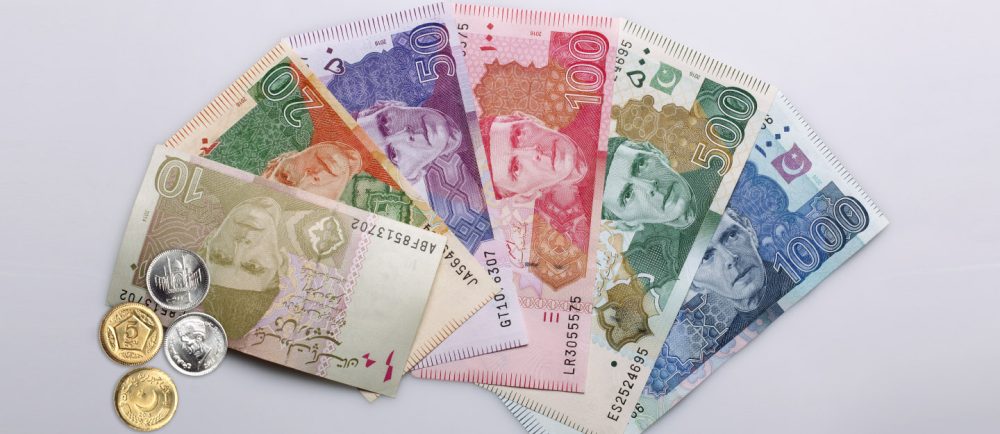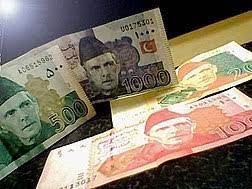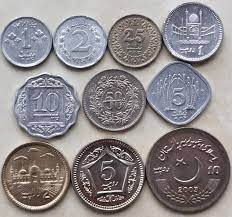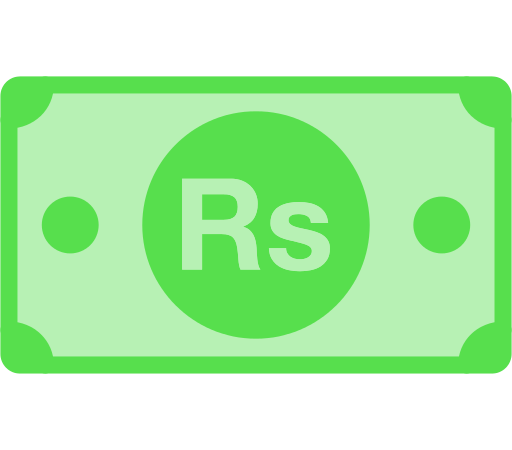This currency is one of the young monetary units, as it was officially introduced only in 1948, replacing the Indian rupee.
After India’s independence in 1947, the British government created the Dominion of Pakistan, a predominantly Muslim province consisting of Western (modern Pakistan) and Eastern (Bengal, future Bangladesh) parts. The nominal power of the British Crown continued until March 12, 1956, when the independence of the Islamic Republic of Pakistan was proclaimed.
In April 1948, coins were issued in Pakistan in accordance with the old Indian monetary tradition: paise and annas as change, rupees as the main currency.
The coins were made at the Pakistan Mint, located in the capital of the Punjab province – Lahore. Pakistan Mint is the oldest mint in Pakistan. The production of coins here began under the British in 1942. The mint today is operated by the State Bank of Pakistan and produces not only coins, but also government awards and postage stamps. The facility is also responsible for refining gold and casting it into 5kg bars for the State Bank of Pakistan.
In 1948-1961. One Pakistani rupee consisted of 16 annas (1 anna = 4 paisa), 64 pauses (1 paisa = 3 paisa) and 192 paisa’s. In 1961, the decimal system was introduced, and 1 Pakistani rupee became 100 pies. Coins appeared in circulation: in 1961 – 1, 5 and 10 paisa, in 1963 – 25 and 50 paisa, in 1964 – 2 paisa, and since 1979 the issue of a coin with a denomination of 1 rupee began. Coins from 1 to 10 pike, originally minted from bronze or an alloy of copper with nickel and zinc, have been made from aluminum since the 1970s. Denominations from 25 paisa to 1 rupee in the 1963-1990s were minted from a copper-nickel alloy. Pike coins of all denominations were withdrawn from circulation in 2014 and are no longer legal tender.
Instead of cupronickel and other copper alloys, the denominations of 1 rupee and 2 rupees began to be minted from aluminum. In 2002, a denomination of 5 rupees was added to the line of regular coins, and in 2016 – 10 rupees. Currently, these coins are minted from brass.
Each of the denominations of the regular coins of modern Pakistan has a unique design that reflects the Islamic essence of Pakistani statehood. The 1 rupee coin depicts a portrait of the founding father of the Pakistani state, the first Governor General of Pakistan in 1947-1948. Muhammad Ali Jinnah, who received from the Parliament the honorary title of “Kuaid-e-Azzam” – “Great Leader” and the Mausoleum of Shahbaz Qalandar (XIV century) in the province of Sindh, where the Sufi saint, revered by Shia Muslims, who lived in the XIII century, is buried – Lal Shahbaz Qalandar. The coin of 2 rupees is decorated with the image of the second largest mosque in Pakistan – Badshahi Masjid in Lahore.
The mosque, built in the 17th century by the Mughal emperor Aurangzeb, can accommodate more than 50,000 people. It is believed that in terms of area, this mosque was the largest building of its time.
The most modest coin in design is 5 rupees. For some reason, the designers of this denomination did not consider it necessary to decorate the coin with a unique pattern. The coin shows the denomination in a five-pointed star and depicts a drawing from the national flag – a crescent with a star.
commemorates the visit of King Faisal ibn Abdulaziz al-Saud of Saudi Arabia to Pakistan. 300,000 people can pray at the Faisal Mosque at the same time.
The State Bank of Pakistan also mints Rs 10 and Rs 20 commemorative cupro-nickel coins which are widely used in circulation. It is noteworthy that in recent years, 4 types of coins dedicated to Pakistani-Chinese friendship have been issued in Pakistan.
Among the rare coins of the Pakistani rupee are collectible coins made of precious metals. The last such coins were issued in the 1970s in very limited editions. Only 700 gold coins with a face value of 500 rupees were minted in 1977 in honor of the 100th anniversary of the “spiritual father” of the Pakistani people, the poet and philosopher Muhammad Iqbal.
Formally, the country’s monetary and financial policy started in July 1948 with the opening of the State Bank of Pakistan in Karachi. At the same time, efforts were intensified to create in Pakistan its own production of coins and banknotes.
The banknotes were printed by the British firm De La Rue. The first Pakistani banknotes, according to Muslim tradition, did not have images, but only inscriptions in Urdu and English and signatures of responsible officials. In the 1950s, the State Bank of Pakistan issued new banknotes with national landscapes and Islamic architecture.
Until today, the portrait of the “Great Leader” is traditionally placed on the banknotes of the Pakistani national currency.
In recent years, the 5 rupee banknote has been gradually being replaced from circulation by a coin of a similar denomination. Banknotes differ in color scheme and pattern on the reverse side. The face of all Pakistani banknotes features a portrait of Muhammad Ali Jinnah.





